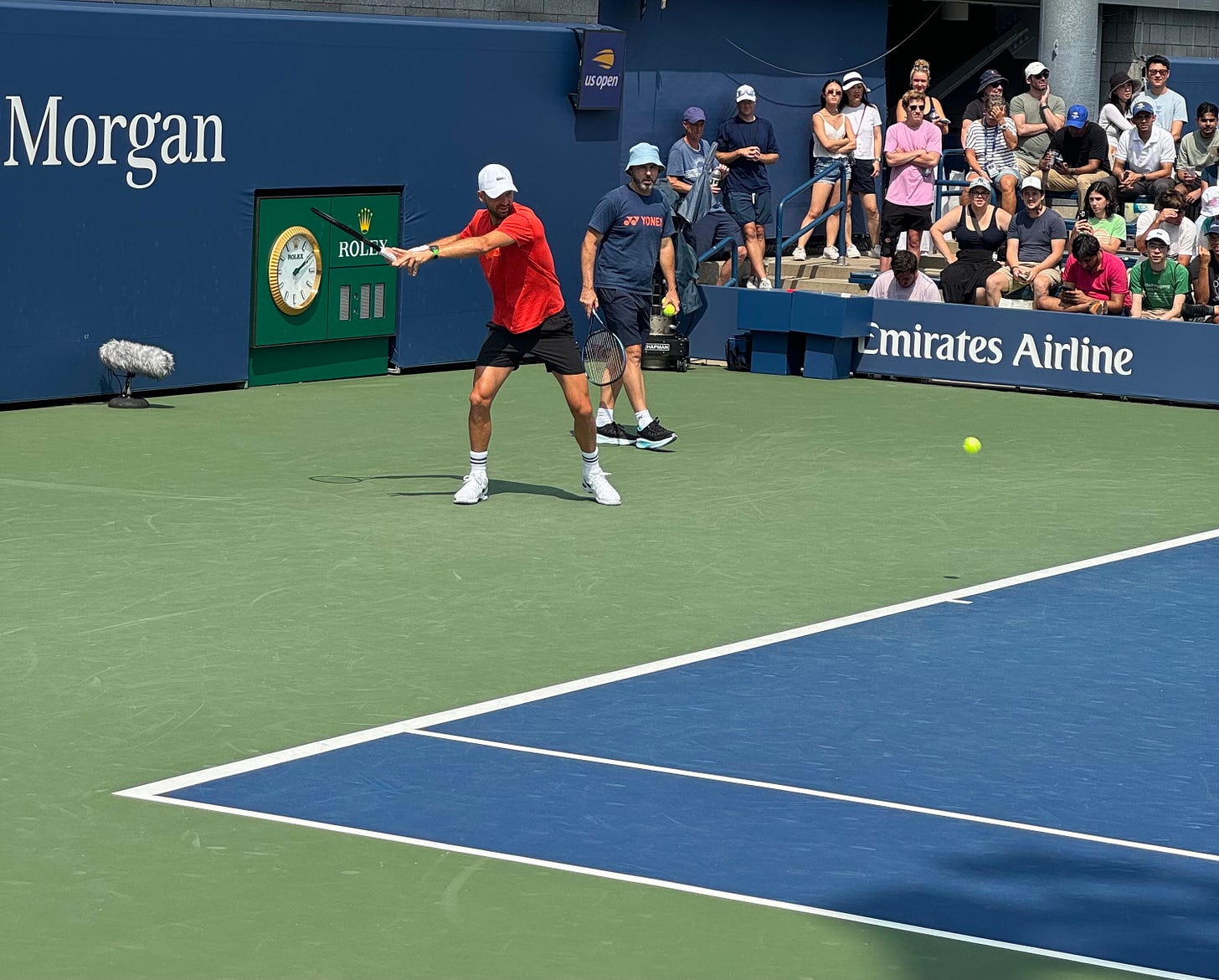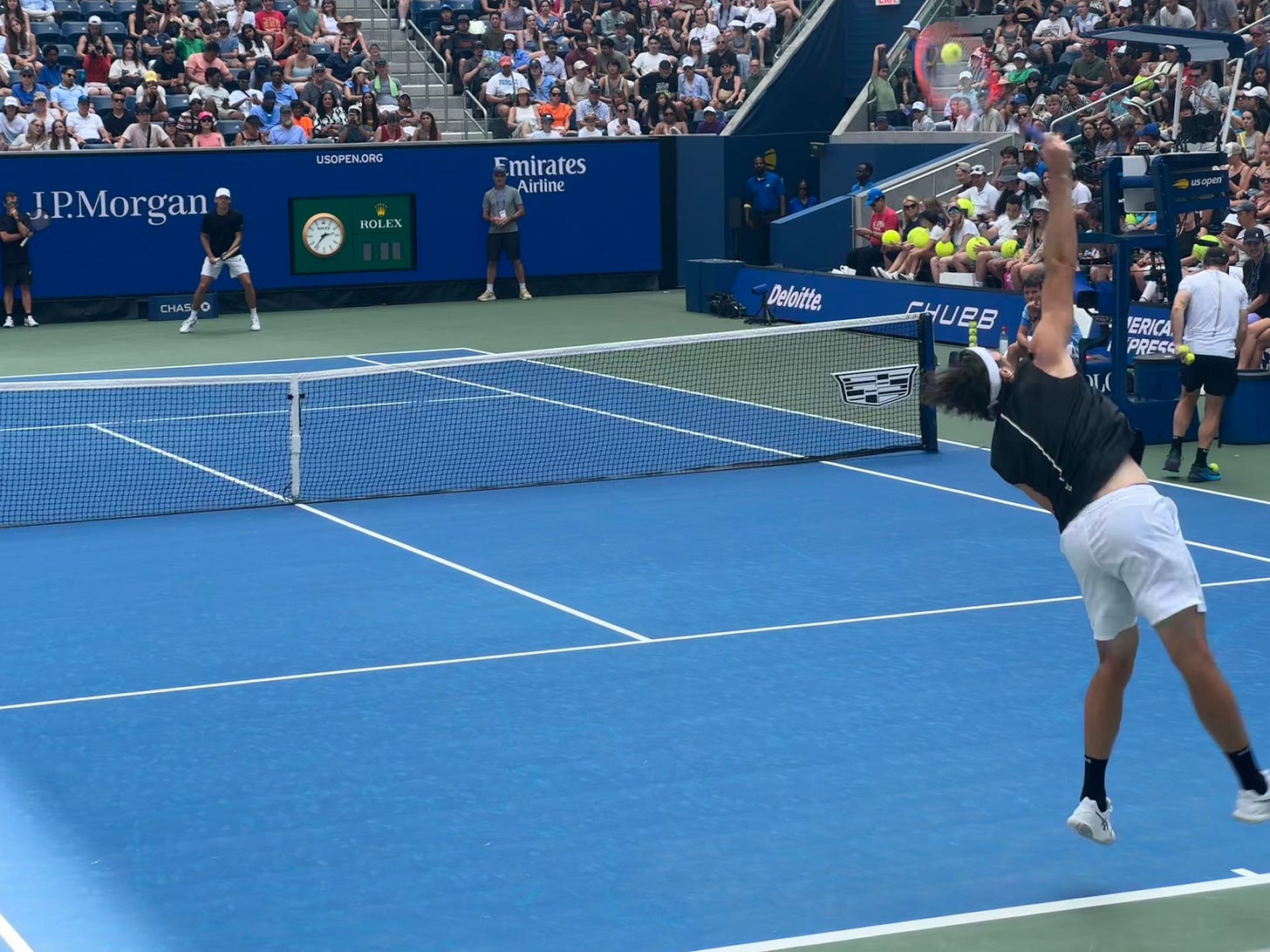Issue no. 20: US Open Practice Sessions Reveal All
Late August in New York City usually means one last dose of sticky heat, droves of tourists filling the boroughs, Manhattanites fleeing for the shores of Long Island and New Jersey, or the mountains of the Adirondacks, as Labor Day fast approaches.
This time of year also means that the US Open is about to begin and have its two-week stranglehold over New York.
While the official tournament starts this Monday, the USTA Billie Jean King National Tennis Center in Flushing, Queens, opened its gates free of charge for the week beginning August 19.
Dubbed “Fan Week,” the grounds showcased qualifying matches and practice sessions, in addition to family-friendly activities.
Considering it’s hard to do anything for free in NYC, this is an incredible week and a good job by the USTA.
Upon my trip to the expansive US Open grounds, I got the full experience, and maybe even a slightly more transparent one than had I gone on a tournament day.
Navigating through crowds on Sunday, the final day of Fan Week, it felt like at least 30,000 people were roaming around. Yet, it was easy to cozy up to virtually any court and watch players practice.
Polished veteran, Grigor Dimitrov, who was once dubbed as “baby Federer” early in his career, was practicing to a full crowd on court 5. Currently ranked no. 9 in the world, but never achieving the height that his former nickname suggested, Dimitrov packed his practice court with onlookers as if he were a multiple major champion. His strokes were clean. No movement in his swing was wasted. Each ball off of his racquet echoed a thwack, even as I distanced myself from his court.
Adjacent to him on court 4 was Uzbekistani-born American tennis player Varvara Lepchenko. She was focused on hitting ground strokes from the baseline and staying there. Take away the setting and the slow building energy of a major, and one court over from Dimitrov might as well have been another universe. Maybe three spectators — including myself — were watching her.
Lepchenko, ranked 199 in the world, drew criticism from her coach after she hit a couple loose forehands. “Are you always gonna complain when I say something?” he asked her from his end of the court. Perhaps a subtle facial cue or some inaudible words were offered by Lepchenko. With the closeness that a player-coach relationship brings, nothing is unseen, unheard or unfelt.
Ricocheting over to Louis Armstrong stadium, I caught the tail end of American hopeful, and world no. 12, Taylor Fritz. He was playing some points against world no. 10, Australia’s Alex De Minaur.
Both players looked sharp. No score was kept. Coaches of each player were observers on the court. They gave them new balls to play with when prompted. Feedback, advice or any kind of coaching was absent.
Fritz and De Minaur are both threats to go deep into the second week of the tournament. Neither player has won a major in their career, however.
Leaving Armstrong, I found my way over to one of the more intimate, and still fairly new stadiums, known plainly as court 17.
There, the always hard-working American Chris Eubanks was practicing with a hitting partner. Flanked by two coaches, Eubanks sought active conversation in between points.
Currently ranked 106 in the world, the lanky American was working on certain kinds of shots that would likely occur within points. He specifically directed his hitting partner to strike a forehand cross court as hard as he was able. Eubanks purposely stood down the line opposite his hitting partner, manufacturing a scenario where he’d have to sprint to the other side of the baseline to run down the hard hit cross-court shot.
Part of what makes watching players practice interesting is context.
Where they are in their career matters. How they approach practicing says something. Their relationship with their coach or coaches lets you into their mental state.
Sports is often reduced to “they won” or “they lost.”
But how did they practice? What did the preparation look like?





